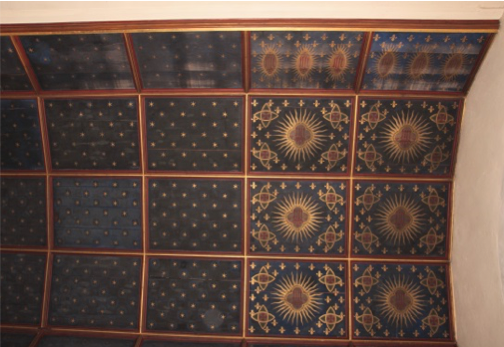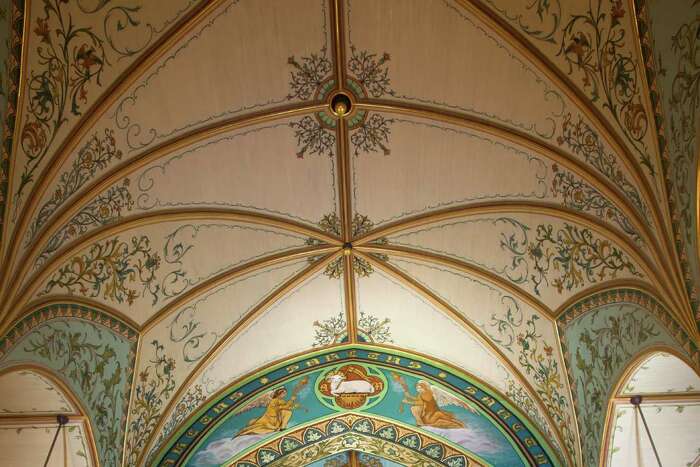This ceiling can be found at St. Michael's in Hildesheim, a former Benedictine Abbey church which, since the time of the Reformation, has been a Lutheran church. The ceiling is unique insofar as it is a full scale depiction of the Tree of Jesse. By way of some background, Jesse was the father of King David, and the prophecy concerning the coming Messiah was that he would be of the house and lineage of David and be born in David’s city of Bethlehem. The Tree of Jesse points to the genealogy of Jesus Christ in relation to the house of David and the fulfillment of the messianic prophecies in His Person. Within the various circular medallions in the center the ceiling are depicted the ancestors of Christ beginning with Abraham.
Historic Trinity in Detroit is a more local expression of the same desire to fill the uplifted eye with images of the faith. It's ceiling is an important part of the overall imagery and artwork of the entire building, a splendid example of Lutheran interest in and expressive of art in service to the Gospel. If you have not ventured to Detroit to take a look at this gem, now is the time to plan a visit.
My point in this is simple. Art in service to the Gospel should not be a relic of the past but something to which we pay great attention now -- with symbols still mattering and making a statement beyond the words themselves.
Unfortunately, this is seldom the case. There are Lutheran churches with historic artwork that have been repaired and restored but the numbers of Lutheran church buildings in which this is an integral part of the overall plan of the building remain few and far between today.
In particular, the ceiling of the chancel is traditionally well ornamented. In plainest form it may be simply a blue sky with gold stars or other similar imagery. Or, it may be the most elaborate and ornamented painting or mosaic. Whatever the choice the chancel is clearly the focus and the place to begin if you are so inclined to recover the well covered ceilings of the churches of our past.





1 comment:
The word ceiling has as it’s base Caelum (Latin) meaning sky, and the French word ciel means sky. If Divine Service is to be Heaven on Earth, then it makes perfect sense that the ceiling should be the sky, which contains the stars. Despite the problematic teaching of our children that God is “up there,” we do look to Heaven as up. The pastor and some congregants during the “Our Father” lift their heads and some pray eyes open to the Father who is in Heaven.
When a church building can afford this type of artwork (matter of commitment?) and has the proper architecture, it makes good sense. Good sense however, is not the reason for adorning our church buildings, but rather than instruction, and God’s glory.
Post a Comment